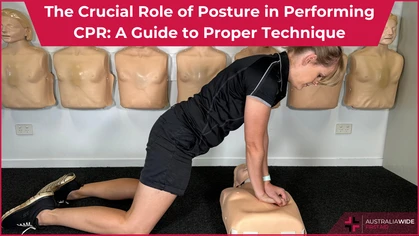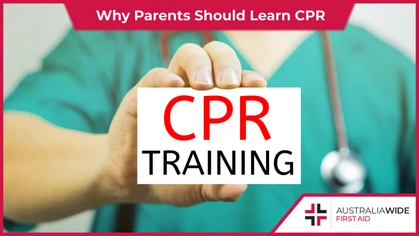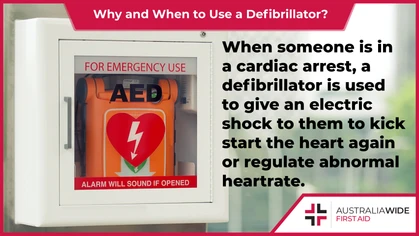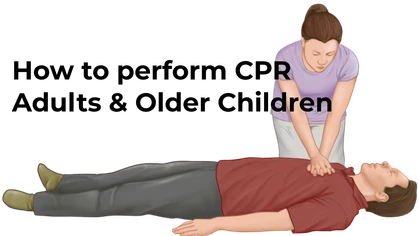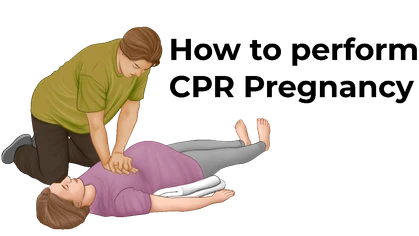What is CPR?

CPR Resources
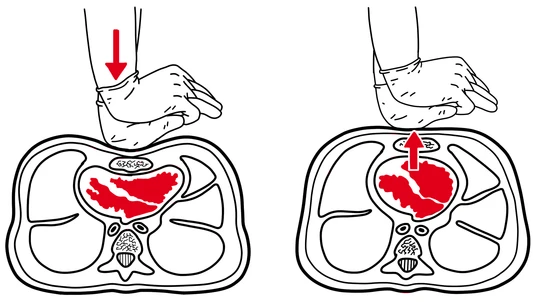
CPR compression, pressing straight down onto the chest to a depth of 5 cm or more on an adult
CPR is an acronym for cardiopulmonary resuscitation, the essential procedure used to provide first aid to a person whose heart has stopped beating. CPR is a proven game-changer in medical emergencies. Despite its effectiveness, the technique itself is relatively simple. It involves locating the compression area on the casualty's chest and administering compressions.

 Rescue breaths
The CPR technique — as recommended by the Australian Resuscitation Council (ARC) and taught in first aid courses around Australia — traditionally involves 30 chest compressions interspersed by 2 breaths (mouth-to-mouth rescue breaths).
First aiders would aim to repeat this cycle until paramedics arrive to take over.
Rescue breaths are no longer a requirement, especially with COVID-19 infection concerns. However, rescue breaths will help provide oxygen and can be carried out safely by first aiders who have appropriate PPE in the form of face-shields.
Rescue breaths
The CPR technique — as recommended by the Australian Resuscitation Council (ARC) and taught in first aid courses around Australia — traditionally involves 30 chest compressions interspersed by 2 breaths (mouth-to-mouth rescue breaths).
First aiders would aim to repeat this cycle until paramedics arrive to take over.
Rescue breaths are no longer a requirement, especially with COVID-19 infection concerns. However, rescue breaths will help provide oxygen and can be carried out safely by first aiders who have appropriate PPE in the form of face-shields.
Learning CPR
Learning CPR is best done by taking a CPR course with a Registered Training Organisation, such as those you’ll see here on the Australia Wide First Aid website. Hollywood portrayals of CPR are invariably fictionalised, as are the sequences of actors up to their necks in water, thrashing around in near-drowning scenes. To learn more about the reality of cardiopulmonary resuscitation, please see our article How to learn CPR.Why You Should Learn CPR?
In oxygen-deprivation emergencies and cardiac arrests, CPR will buy time for the casualty until the medical professionals arrive. Near-drowning, heart attack, and drug overdose are the more common instances of this type of emergency where the heart has stopped along with breathing. CPR helps avert tragedy by ensuring the patient receives life-giving oxygen until hospital treatment becomes available. Situations like this are confronting. If you are at the scene, calling 000 is a must. If you are trained in CPR, you can do more. You could take action and perhaps help save a life. In a sudden cardiac arrest episode, the first 5 minutes are critical. CPR is of vital importance to give the person the best chance of survival. Those chances of survival diminish rapidly. Death can result in as little as 10 minutes. Please see our article on Sudden Cardiac Arrest First Aid. And if you want to upgrade your CPR knowledge - Our Pocket Mask Training online course gives you the knowledge you need to be able to effectively us a pocket mask or face shield during CPR. Being fully online means you can work through it at your own place, either at your desk at work or in the comfort of your own home. Read the texts, watch the videos, and answer the quiz questions - it's as easy as that! You'll also receive a Certificate of Completion at the end of the course - perfect to hand to your employer or put on your resume.
And if you want to upgrade your CPR knowledge - Our Pocket Mask Training online course gives you the knowledge you need to be able to effectively us a pocket mask or face shield during CPR. Being fully online means you can work through it at your own place, either at your desk at work or in the comfort of your own home. Read the texts, watch the videos, and answer the quiz questions - it's as easy as that! You'll also receive a Certificate of Completion at the end of the course - perfect to hand to your employer or put on your resume.
Other Resources
Originally published at
https://www.australiawidefirstaid.com.au/resources/what-is-cpr
as part of the Australia Wide First Aid Articles Library
